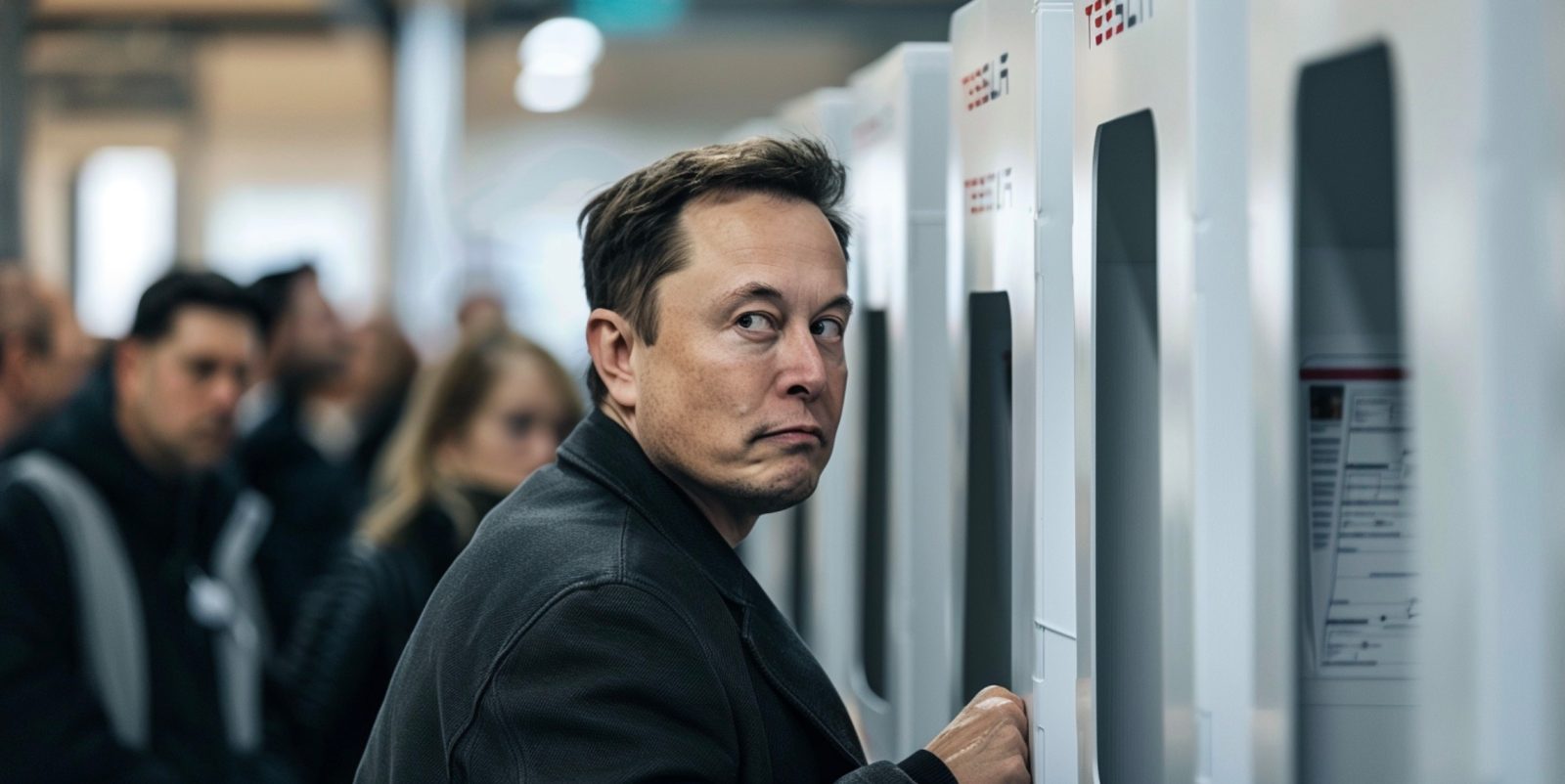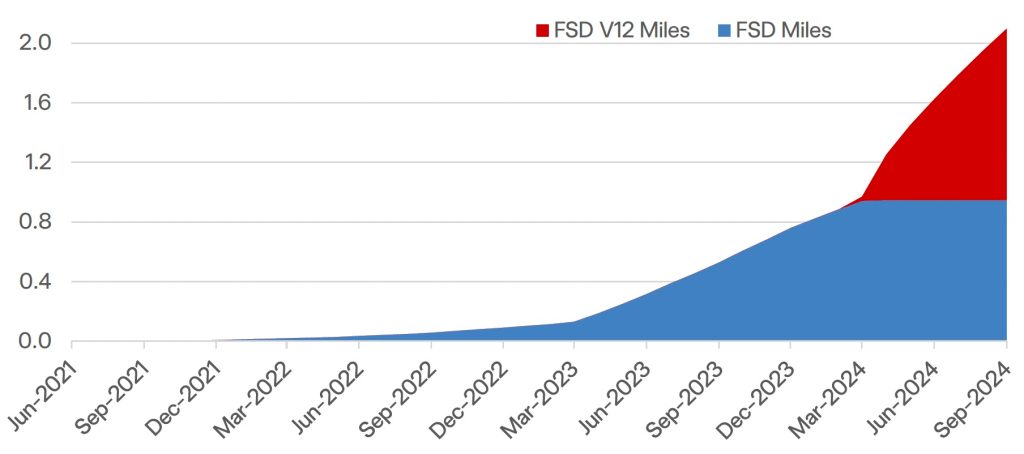
Elon Musk just said some wild things about Tesla’s self-driving rollout – clarifying the path to Tesla deploying unsupervised autonomous vehicles next year.
He may regret some of these comments.
At the risk of repeating myself, Tesla has never released any data about its (Supervised) Full Self-Driving (FSD) program beyond the total number of miles driven with FSD, which the automaker just confirmed surpassed 2 billion miles:

That’s despite Tesla starting to claim improvements in “miles between critical disengagement” without any base data to compare it to.
For example, Tesla released its “AI roadmap” last month and it included this milestone to be completed in September:
12.5.2 with ~3x improved miles between necessary interventions
Not only did Tesla not specify what improvement compared to what version, but it also claimed to have completed all September milestones, including this one.
The best data we have is a crowdsourced data set with a few hundred thousand miles between all versions of FSD. It’s far from ideal, but it’s the best data available, and Musk has even positively acknowledged this dataset recently as Tesla continues to refuse to release its own.
Over 40,000 miles between all versions of v12.5, the data shows that FSD is achieving 138 miles between critical disengagement:

That’s actually worse than the previous wide release (12.3 – Tesla skipped wide releasing 12.4 for most people). There’s no obvious release to compare it to where Tesla can claim a 3x improvement in miles between critical disengagement based on this dataset.
Elon Musk’s new FSD rollout comments
Now, with that context in mind, CEO Elon Musk has made new comments during the conference call following Tesla’s release of its Q3 2024 financial results:
We expect to see roughly a five- or six-fold improvement in miles between interventions [with v13] compared to 12.5. And actually, looking at the year as whole, the improvement in miles interventions, we think will be at least three orders of magnitude. So, that’s a very dramatic improvement in the course of the year, and we expect that trend to continue next year.
The second part of the comment will be more challenging to verify, but for the first time, Musk is clearly comparing two versions for the first time.
He says that Tesla’s upcoming FSD v13, which is supposed to come within the next week, will achieve a 5 to 6x increase in miles between disengagement compared to v12.5.
Ashok Elluswamy, the head of FSD at Tesla, clarified that this would be miles between critical disengagement.
That means that based on the crowdsourced data, Tesla FSD v13 will achieve between 690 and 828 miles between critical disengagement.
If Tesla indeed delivers v13 by the end of the month, we should know whether that’s true or not within the next few weeks.
After that, Musk and Elluswamy are predicting even faster improvements after v13, leading to safer-than-human drivers by the end of the second half of next year.
Musk then added that Tesla’s internal projection expects to achieve that in Q2 2025:
So, that’s not sandbagging or anything else. Our internal estimate is Q2 of next year to be safer than human and then to continue with rapid improvements thereafter.
That’s on what he based his announcement at the We, Robot event that Tesla will deploy “unsupervised self-driving” in California and Texas next year.
Many have noted that Tesla has yet to apply for a self-driving permit in California and it took companies like Waymo over 6 months to get their permits after applying. As for Texas, the process might be faster as Musk pointed out, but the self-driving provider needs to take on the full liability.
Tesla needs to be ready for that.
Electrek’s Take
To be honest, if v13 truly comes with “Unpark, Park, and Reverse in FSD,” as Tesla wrote in its roadmap, it could achieve something close to “690 to 828 miles between critical disengagement.”
Many disengagement have to do with FSD getting confused about what to do once it arrives at its destination. If Tesla can have the vehicle actually park itself and get itself unstuck by reversing, you will remove a lot of disengagements.
However, that’s not really the hard part. To me, that would simply mean that Tesla achieved what Elon previously called FSD “feature complete”—meaning it can complete all the tasks related to driving. After that, the march of the 9s (99.9999999% efficiency) starts, and that’s the hard part.
Ashok said something important during the conference call:
By Q2 next year, we should cross over the average in miles per critical intervention, or collision, in that case, [for humans].
He says that the goal is for FSD’s miles between critical interventions to beat the miles between collisions for human drivers.
Top comment by KerrySkates
I try to use FSD every now and then and often end up shutting it off within the first mile to mile and a half due to how unsettling it is and how many times it tries to do something dangerous.
I am curious how biased their data is based on geolocation and how good the system works in different areas of the world.
Someone whose location has a lot of data, easy to navigate roads, ideal weather conditions, etc is more likely to drive more miles using FSD. Thus, in theory, a large number of miles driven are by those who are having a good experience.
The rest of us don’t want to die, get hurt, damage property, or hurt other living beings.
According to the NHTSA data that Tesla uses to compare against its Autopilot safety reports, that number stands at 670,000 miles.
To be clear, Tesla believes the current 138 miles between critical disengagement will increase to 670,000 miles between critical disengagement within the next 8 months.
This goal brings a few words to mind: ambitious, delusional, and made up.
And again, if Tesla believes that the crowdsourced data is inaccurate, it can always release its own.
FTC: We use income earning auto affiliate links. More.






Comments